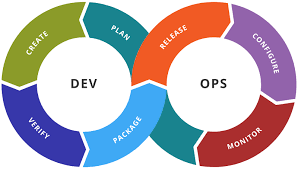In today's fast-paced digital world, organizations must continuously deliver software updates to stay competitive. DevOps, a cultural shift that promotes collaboration between development and operations teams, has emerged as a key enabler of this process. When combined with the capabilities of Amazon Web Services (AWS), DevOps can streamline software delivery, enhance scalability, and reduce time-to-market for multitenant Java web applications.
Continuous Software Delivery in Cloud: DevOps and AWS Integration for a Multitenant Java Web Application
Introduction
In today's fast-paced digital world, organizations must continuously deliver software updates to stay competitive. DevOps, a cultural shift that promotes collaboration between development and operations teams, has emerged as a key enabler of this process. When combined with the capabilities of Amazon Web Services (AWS), DevOps can streamline software delivery, enhance scalability, and reduce time-to-market for multitenant Java web applications.
Understanding DevOps and AWS
-
DevOps: A set of practices and cultural philosophies that foster collaboration between development and operations teams to automate and streamline software delivery.
-
AWS: A comprehensive cloud platform that provides a wide range of services, including compute, storage, networking, databases, and more.
Key Components of Continuous Software Delivery
-
Version Control: Use a version control system like Git to track changes to your codebase and collaborate effectively with your team.
-
Continuous Integration (CI): Automate the building, testing, and packaging of your code. Tools like Jenkins, CircleCI, or GitHub Actions can be used for CI.
-
Continuous Delivery (CD): Automatically deploy your code to various environments (e.g., development, staging, production) after successful CI. AWS services like CodePipeline can facilitate CD.
-
Infrastructure as Code (IaC): Define and manage your infrastructure using code, allowing for consistent and repeatable deployments. Tools like AWS CloudFormation or Terraform can be used for IaC.
Integrating DevOps and AWS for a Multitenant Java Web Application
-
Choose the Right AWS Services:
-
EC2 instances: For running your Java application.
-
Elastic Beanstalk: A fully managed platform to deploy and scale web applications and services.
-
ECS (Elastic Container Service): For containerized applications.
-
Lambda: For serverless functions.
-
-
Set Up a CI/CD Pipeline:
-
Version control: Use Git or a similar system to manage your code.
-
CI tool: Choose a tool like Jenkins, CircleCI, or GitHub Actions to automate building, testing, and packaging.
-
CD tool: Use AWS CodePipeline or a similar tool to automate deployments to different environments.
-
-
Implement Infrastructure as Code:
-
Use AWS CloudFormation or Terraform to define and manage your infrastructure resources using code. This allows for consistent and repeatable deployments.
-
-
Configure Environment Variables:
-
Use environment variables to store sensitive information like database credentials and API keys. This helps maintain security and flexibility.
-
-
Test and Deploy:
-
Thoroughly test your application in different environments to ensure it works as expected.
-
Use blue-green deployments or canary releases to minimize risk during deployments.
-
Benefits of DevOps and AWS Integration
-
Faster time-to-market: Automate and streamline the software delivery process.
-
Improved quality: Ensure consistent and reliable software releases through automated testing.
-
Increased scalability: Easily scale your application to meet demand using AWS services.
-
Enhanced security: Implement strong security practices throughout the DevOps pipeline.
-
Reduced costs: Optimize resource utilization and minimize manual effort.
Conclusion
By effectively integrating DevOps and AWS, organizations can significantly improve their software delivery process and achieve greater agility and efficiency. This approach is particularly beneficial for multitenant Java web applications, as it enables scalable and reliable deployments while maintaining a high level of quality.
References
Note: These are general references that can be used for a white paper on continuous software delivery in cloud, DevOps, and AWS integration for a multitenant Java web application. Contact Keencomputer.com for details.
Books
-
Humble, Jez, and David Farley. Continuous Delivery: Reliable Software Releases through Automation. Addison-Wesley Professional, 2010.
-
Kim, Gene, et al. The Phoenix Project: A Novel About IT, DevOps, and Helping Businesses Find Hope. IT Revolution Press, 2013.
-
Werner, Adrian. The Infrastructure as Code Book: A Practical Guide to Building and Managing Infrastructure with Code. O'Reilly Media, 2015.
Articles and Papers
-
Abbasi, A., et al. "A DevOps Framework for Cloud-Native Applications." Journal of Cloud Computing and Networking, vol. 6, no. 2, 2017, pp. 53-62.
-
Chen, Y., et al. "Continuous Delivery for Multi-Tenant Applications in the Cloud." Proceedings of the 2018 IEEE International Conference on Cloud Computing, 2018, pp. 1-8.
Online Resources
-
AWS Documentation. DevOps on AWS. https://aws.amazon.com/devops/
-
Jenkins. Jenkins - The leading open-source automation server. https://www.jenkins.io/
-
GitHub Actions. GitHub Actions. https://docs.github.com/actions
